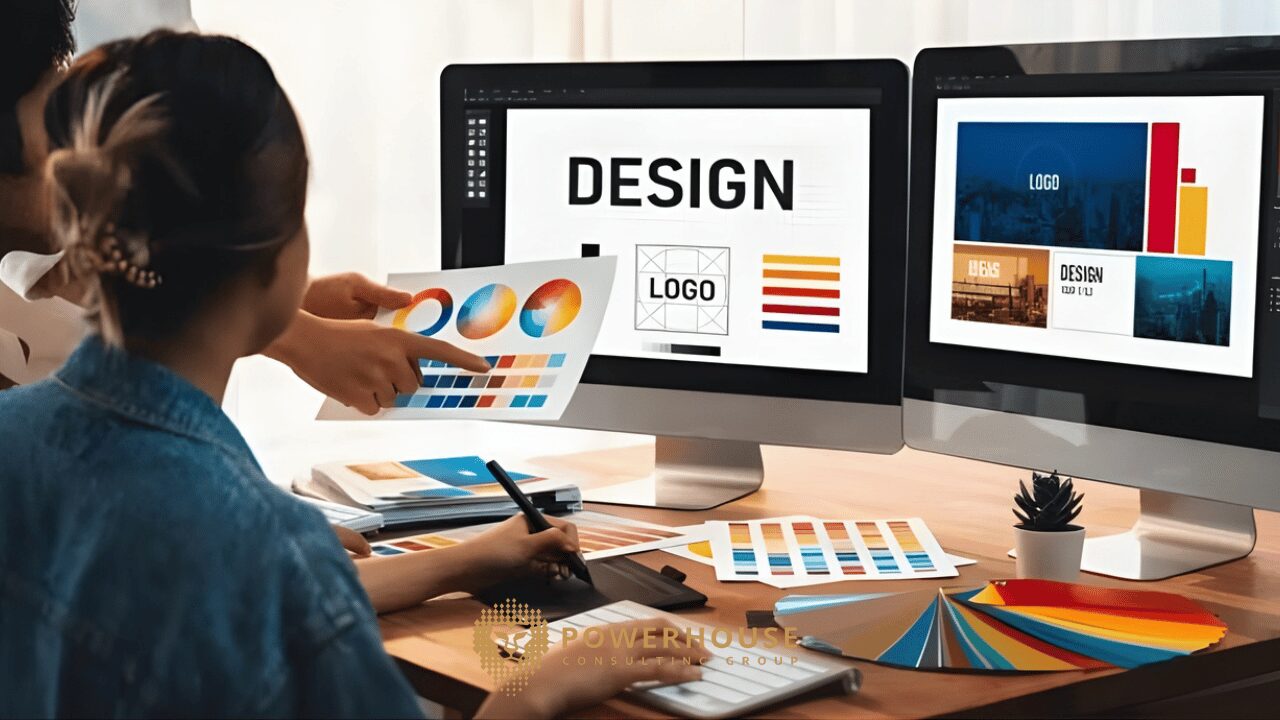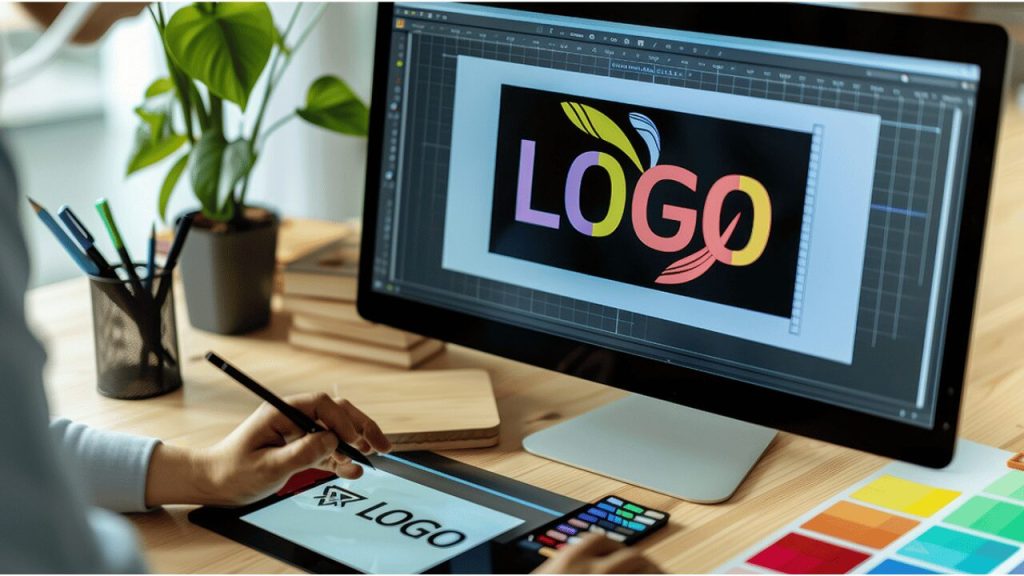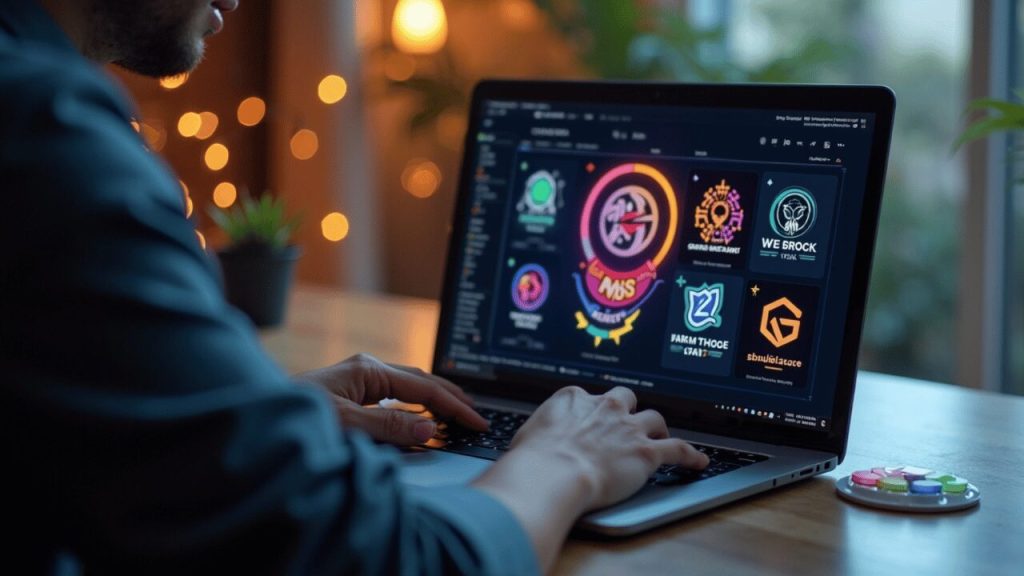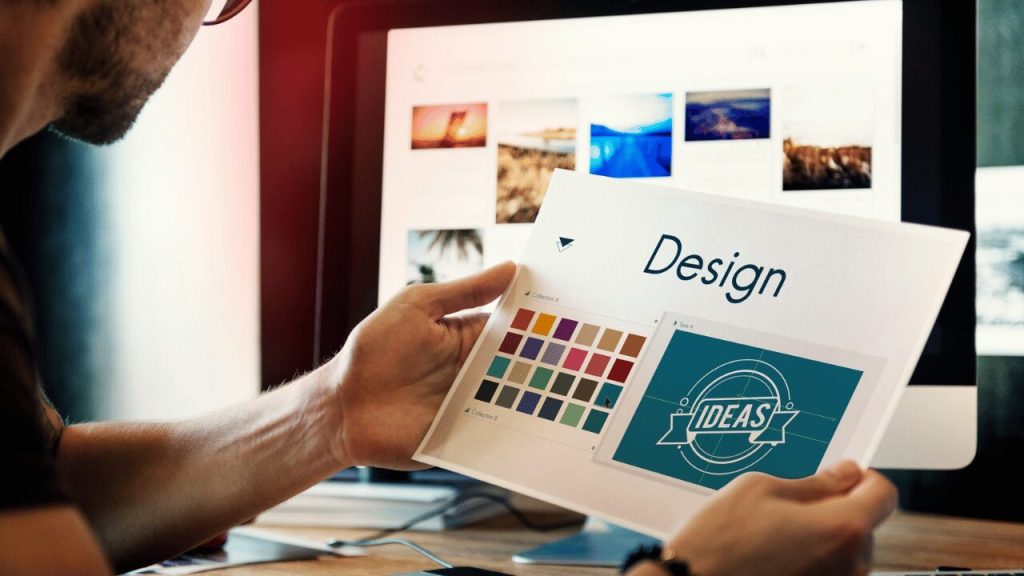
This post may contain affiliate links. Click here to find out more about this.
Table of Contents
The process of creating a brand identity—encompassing everything from the core logo design to the exhaustive brand style guide—is undergoing a profound transformation thanks to Artificial Intelligence (AI). AI is moving beyond simple automation to become a collaborative partner, driving unprecedented speed, data-driven precision, and scalability in brand development. This shift is not about replacing human creativity but augmenting it, allowing designers to rapidly explore more strategic and aesthetically sound possibilities than ever before, leading to the creation of truly next-generation brand assets.
The Role of AI in Next-Generation Logo and Brand Guide Design
I. AI in Logo Conceptualization and Generation
The initial phase of logo design, which often involves extensive mood boarding and concept sketching, is where AI first demonstrates its transformative power by accelerating idea generation and diversification, ensuring the resulting visual marks are both creative and technically viable from the outset.

A. Rapid Idea Prototyping and Exploration
AI models, particularly those leveraging generative adversarial networks (GANs) and diffusion models, can rapidly process stylistic parameters and constraints to produce hundreds of diverse logo concepts in minutes. This is a radical departure from traditional methods that relied heavily on manual sketching.
- Style and Aesthetics Mapping: Designers input desired aesthetics (e.g., minimalist, brutalist, vintage) or industry themes, alongside emotional keywords (e.g., trust, innovation). The AI then synthesizes this information with vast databases of successful designs and historical art movements to output initial visual options. This drastically cuts down the time spent in the initial sketching and ideation phase, allowing designers to focus on refining the best concepts rather than generating volume.
- Constraint-Based Generation: AI tools allow designers to set non-negotiable parameters crucial for a brand’s visual identity, such as adherence to a specific geometric style, required use of negative space to convey a secondary meaning, or limitations on line thickness. The algorithms then generate solutions that adhere strictly to these complex rules, ensuring early concepts are immediately viable, brand-aligned, and technically feasible for production.
B. Logo Optimization for Adaptability
A modern logo must function flawlessly across countless digital and physical applications, from a tiny favicon to a massive billboard. AI ensures design integrity and optimal performance across all platforms automatically.
- Scalability and Format Testing: AI can automatically test a generated logo design across hundreds of resolutions, aspect ratios, and file formats (vector, raster, favicon, social icon). It uses advanced visual recognition to predict issues like moiré patterns, line breakage, or loss of clarity at small sizes. It provides immediate feedback on elements that might break, blur, or lose fidelity, ensuring the final logo is future-proof and versatile for both print and digital media.
- Color Contrast and Accessibility: Beyond aesthetic appeal, AI rigorously analyzes the logo’s color combinations against recognized international standards (like WCAG 2.1 and beyond) to guarantee maximum legibility and accessibility for users with various visual impairments, including color blindness. This automated, rigorous check is a crucial step in modern, ethical branding, ensuring the brand is inclusive by default.
II. Professional AI Tools in Practice
Leading design firms and platforms are leveraging specialized AI tools that go beyond basic logo makers, integrating deep learning to handle complex aspects of brand identity creation, transforming the designer’s workflow from executor to curator.

A. Generative AI for Creative Augmentation
Platforms that utilize powerful generative models enable professional designers to leapfrog traditional creative bottlenecks, particularly in conceptualizing the core logo mark.
- Adobe Firefly and Adobe Express: Tools integrated directly within the professional Adobe ecosystem use generative AI to create high-quality design variations based on text prompts and provide quick actions essential for designers, like complex background removal, asset resizing, or high-fidelity conversion to SVG (scalable vector graphics). This allows designers to rapidly iterate on icons and logo marks while maintaining the high quality and professional file types required for production.
- Recraft and Midjourney/DALL-E Integration: These advanced generative models are frequently used by designers to produce high-concept, non-traditional, or stylized visual elements and mascots based on complex, artistic prompts. The generated visual concepts serve as powerful inspiration that is then meticulously refined, cleaned, and vectored by human designers in tools like Adobe Illustrator to ensure legal viability and production quality, utilizing AI as a high-speed, high-concept brainstorming partner.
B. Full-Stack Brand Identity Platforms
Other specialized platforms provide end-to-end solutions that automate the entire brand identity package, drastically reducing the time required to deliver a full brand guide.
- Looka (formerly Logojoy) and Tailor Brands: These platforms use sophisticated AI to guide users through a detailed branding questionnaire that assesses industry, style preferences, and target audience. They generate a core logo and then automatically extend that design into a comprehensive, ready-to-use “Brand Kit.” This kit typically includes social media assets sized for all platforms, business card designs, and the foundational brand guidelines (color codes, font usage), automating the time-intensive tasks of initial asset creation and formatting.
- Designhill and Wix Logo Maker: These tools provide a hybrid approach. They use AI to generate numerous initial options based on user inputs, but critically, they offer robust, user-friendly editors for significant manual customization. This ensures that while the AI speeds up the initial creation, the designer or business owner retains final, artistic, and strategic control over the ultimate aesthetic and messaging of the brand identity.
III. Data-Driven Brand Strategy and UX Alignment
AI’s analytical capabilities move logo design from a purely subjective artistic endeavor to a data-informed strategic decision, directly linking visual elements to customer response and market success.

A. Predictive Performance and Emotional Resonance
AI models can analyze existing market data, neuromarketing studies, and consumer psychology to predict how specific design elements will be received by the target audience before the logo is ever launched.
- A/B Testing at Scale: Instead of testing a few final designs manually, AI simulates how thousands of design variations would perform in the market by analyzing historical data on metrics like click-through rates, brand recall in memory tests, and emotional responses (e.g., trust, excitement, reliability). This data-driven approach allows the design team to select concepts with the highest predicted market efficacy and strategic fit.
- Semantic Consistency Check: The AI meticulously compares the visual language of the logo (its colors, typography, shapes, and implied movement) with the company’s stated mission, brand narrative, and core values. This process prevents accidental mixed messaging or dissonance, ensuring the visual identity is semantically consistent and reinforces the intended brand personality.
B. Market Trend Analysis and Differentiation
AI acts as a critical market intelligence tool, preventing brand duplication, avoiding generic designs, and identifying untapped visual territories for maximum competitive advantage.
Subscribe to our monthly newsletter filled with good stuff
Your data are safe with us. We will never spam and you can always unsubscribe with 1 click.
- Uniqueness Scoring: AI scans vast, proprietary libraries of existing logos and trademark registries across relevant global jurisdictions to calculate a quantitative “uniqueness score” for a new design. This helps designers proactively avoid accidental infringement or simply blending in with competitors, ensuring the logo has a strong foundation for legal protection and market differentiation.
- Identifying Visual Gaps: By mapping the entire visual landscape of a specific industry (e.g., all fintech logos), AI can identify overused design clichés (e.g., overlapping circles for “connection”) and highlight areas of the market that are visually underserved. This critical insight guides human designers toward genuinely differentiating aesthetic choices that capture attention and create a unique identity.
IV. Ethical Considerations and Risks of AI in Branding
While the efficiency gains are immense, the use of AI in creative fields introduces significant ethical, legal, and creative challenges that require careful human oversight and strategic governance.
A. Originality, Plagiarism, and Copyright
The core legal and ethical risk involves the very nature of generative AI, which learns by imitating the patterns within its massive training dataset.
- Training Data Sourcing: Many commercial AI models are trained on billions of images scraped from the open internet, often without the explicit consent or fair compensation of the original artists. This raises serious ethical questions about the exploitation of human labor and the inherent legal risk of an output that is too derivative or similar to existing copyrighted works.
- Trademark and Uniqueness: AI-generated logos risk being non-original “mashups” or uninspired combinations of existing design elements. Relying solely on an AI tool may produce a design that is aesthetically functional but legally indefensible or non-trademarkable due to its lack of human-led originality. A human designer’s final review, refinement, and legal search remains an essential, non-negotiable step.
B. Bias and Cultural Sensitivity
The data used to train AI models reflects human society, including its ingrained biases and historical blind spots.
- Algorithmic Bias: If training data disproportionately favors Western design aesthetics or is sparse in representing certain non-Western cultures or diverse demographics, the AI’s output may default to culturally insensitive or generic designs. This can lead to a brand identity that fails to resonate or actively alienates potential customer segments in diverse markets.
- Lack of Context and Intent: AI excels at pattern recognition but fundamentally lacks human empathy, strategic judgment, and cultural nuance. It cannot understand the deep, emotional, or cultural context behind a design decision, which is absolutely critical for creating a logo that resonates authentically with a specific target audience or global market segment.
V. Automating the Creation of Comprehensive Brand Guides
The brand guide, historically a time-consuming manual effort prone to inconsistencies, is perhaps the greatest beneficiary of AI automation, leading to living, dynamically updated style repositories that maintain consistency across an organization.
Subscribe to our monthly newsletter filled with good stuff
Your data are safe with us. We will never spam and you can always unsubscribe with 1 click.

A. Dynamic Generation of Usage Guidelines
Once the core logo and identity assets are finalized, AI automates the tedious, error-prone task of documenting their proper usage and technical specifications.
- Automated Clearance and Spacing Rules: The AI automatically calculates and documents precise clearance zones (minimum space surrounding the logo), minimum size requirements for various media (digital and print), and the exhaustive rules for correct placement against different backgrounds (light, dark, photographic, patterned). This ensures brand consistency is maintained globally, regardless of who is applying the brand assets.
- Systematic Color Palette Documentation: AI generates comprehensive, error-free documentation for the full brand color palette, including precise values for every required format: HEX (web), RGB (digital screens), CMYK (process print), and Pantone (standardized spot color print). This level of detail eliminates manual data entry and potential errors across different media vendors.
B. Intelligent Typographic Hierarchy and Voice
AI applies the visual identity to broader brand communications, ensuring holistic consistency across all text-based collateral and marketing materials.
- Typographic Pairing Suggestions: The system analyzes the aesthetic traits of the logo (e.g., sharp edges, rounded corners, vintage feel) and suggests optimal, harmonizing font pairings for headings, subheadings, and body text. It then documents the correct weight, size, and leading for all major applications, creating a consistent text hierarchy.
- Tone of Voice Consistency: Leveraging advanced Natural Language Processing (NLP), AI can analyze a brand’s established “voice” (e.g., professional, playful, authoritative) across its existing content. It can then generate templates, editorial guidelines, and even real-time feedback for copywriters, ensuring that the brand’s written communication is just as consistent and on-message as its visual identity.
Conclusion: The Designer-AI Partnership and The Path Forward
The integration of AI into logo and brand guide design signifies a massive leap in efficiency and precision. It liberates the human designer from the mechanical and repetitive aspects of the work, shifting their focus to the strategic, empathetic, and culturally relevant aspects of branding. The key to successful next-generation branding lies in adopting a hybrid approach: using AI to explore, validate, and automate, while relying on the human designer to set the ethical framework, provide strategic intent, and deliver the final, legally unique, and emotionally compelling brand story.
The next-generation brand guide will be a living, dynamic AI-powered platform, constantly auditing usage, updating standards, and adapting to new media formats without constant manual upkeep. The future of brand identity is not created by AI, but rather with AI—a collaborative partnership resulting in a more resilient, strategically sound, and globally consistent brand identity.
For organizations ready to embrace this advanced, hybrid methodology, specialized consulting expertise is essential for bridging the gap between creative vision and the complex technical execution of AI. PowerHouse Consulting Group is positioned to operationalize these next-generation branding systems. We offer services directly related to leveraging AI for brand and digital execution, ensuring that the brand identity is not only beautifully designed but also technically flawless and scalable:
- Custom AI Solution Design & Agentic AI Development: Developing bespoke AI tools for tasks like automated brand guide compliance checking, predictive design testing against market data, and ensuring the brand’s visual identity remains consistent across all digital assets and platforms.
- Branding and Graphic Design: Providing the necessary human creative expertise to guide the AI, ensuring the final logo and brand assets (informed by AI data) are aesthetically unique, legally sound, and emotionally resonant with the target audience.
- Web Development and Advanced SEO: Ensuring the new, AI-informed brand standards (colors, typography, assets) are seamlessly integrated into responsive web and platform development, optimizing the brand’s entire digital presence for maximum technical performance and search visibility.
By combining human ingenuity with expert AI integration, businesses can ensure their next-generation logo and brand guide are not only aesthetically modern but also technically consistent, strategically validated, and built for the multi-platform future.
Contact Powerhouse Consulting Group today to schedule a free consultation and learn how our services can help you achieve your business goals.
Ready to see how human-led strategy and AI-powered tools can elevate your brand?




